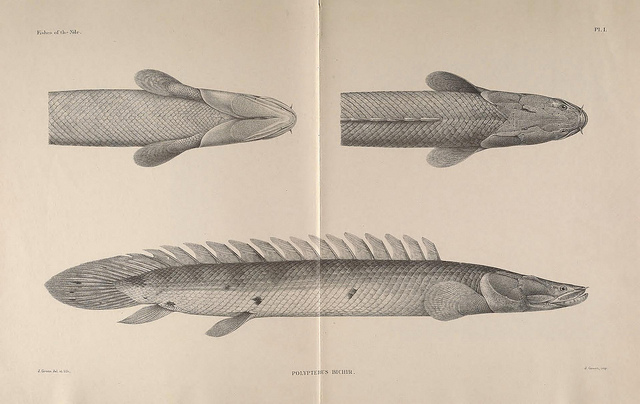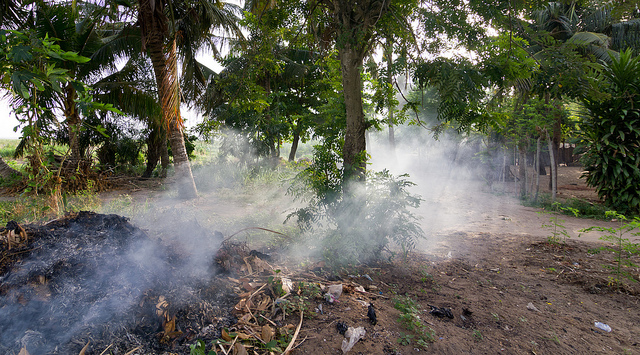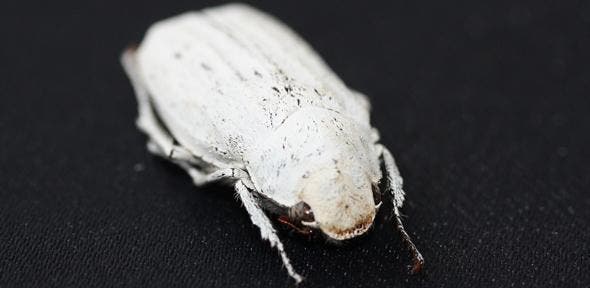Bichirs: The fish that walk on land

Illustration of a Bichir out of “The fishes of the Nile”, CC BY 2.0 via Biodiversity Heritage Library /flickr.com
The fish on the picture on top is a bichir, and it belongs to a fish order quite fascinating for researchers. Especially one representative of the bichirs, that goes by the name of Senegal bichir or “dinosaur eel”, was of special interest lately. The fish of the order of the Polypteriformes (meaning it has lots of fins) has not only lungs and gills, but also ossified, strong pectoral fins, to occasionally walk on land.
The ability to walk and breathe air led to an experiement, when researchers of the McGill University in Canada raised the dinosaur eels for eight months — on land. Of course they had to take care that the fishes won’t dry out. But because they move on land from pond to pond the fishes were kind of used to the situation.
The experimental arrangement consisted of a mesh and enough water for the fishes to stay in normal shape, but also too little water to just swim. The researchers also formed a control group using 38 fish growing up in their usual aquatic environment. The results of the research illustrate very clearly the changes that might have enabled fins to become limbs when some fish decided to trade water for land, around 400 million years ago. And that was, as we all would have to admit, a big step that would help the rise to tetrapods, including almost all land vertebrates from amphibians to mammals.
And the fish walk looks like this, do you see conformities in style to, let’s say, humans?
Dandelions, the new hope of the tire and rubber duck industry
Take a moment to think about rubber. We all need the flexibel waterproof material everyday without noticing it. And so does the world’s economy. Millions of things are made of rubber, tires for cars for example, the soles of shoes, rubber balls for kids to play, airbeds… And what about all these lovely rubber ducks without whom every sunday bath would be incomplete?
Although rubber can be produced synthetically, lots of the material still needs some 40 percent or more of natural rubber, coming from rubber trees. And since those trees are prone to diseases and can be affected by bad weather, scientists try to find a replacement. And they found one: Dandelions. Those yellow flowered plants contain a white, milk-like liquid that has the potential to become rubber. The success of the process depends on the strain of the plant itself. Some are more suitable than others. It’s possible to harvest at least some kind of rubber (for example for rubber bands) from every Dandelion.
Besides dandelions tend to be a very tough weed, growing even under adverse conditions such as poor soil or a changing climate.
Luckily for the whole tire and maybe the rubber duck industry, a dandelion strain from Kazakhstan seems to have a saviour-potential. The plants taproot yields that milky fluid – with tyre-grade rubber particles in it. So molecular scientists at the Fraunhofer Institute are working to secure the future of road transport if the tree goes the way of all flesh.
So let’s hope that the research will be a success, otherwise the rubber duck in the video below will probably be all alone forever. And don’t you want to have one of these in your tub (even if it has to be a very very big tub)?
The duck was created by Dutch artist Florentijn Hofman. It sailed into the Port of Los Angeles on August 20th, 2014 and is said to be the “world’s largest rubber duck,” being six stories tall and with a weight of 11 tons.
Pollution by burning trash – #numberoftheweek: 41
More than 40 percent of the garbage that we produce is burned unregulated, estimates a new study led by the National Centre for Atomspheric Research. These fires are responsible for blowing gases and particles into the atmosphere. You can guess that this is not exactly healthy, neither for humans nor the climate.
How did the researches manage do collect the data? They could hardly visit every open fire around the globe to measure the influence of it’s smoke.
Instead they compared population figures and per capita waste production with official tallies of trash disposal for each country in the world. The result is that 1.1 billion tons, or 41 percent, of the total waste generated worldwide is disposed of through unregulated burning every year: our #numberoftheweek.
The study also offers the opportunity to check if your country is among the biggest polluters. If you are living in China, the United States, India, Japan, Brazil, and Germany you belong to the top waste producers worldwide. But if you call China, India, Brazil, Mexico, Pakistan, and Turkey home, your nation belongs to the greatest emitters of pollution from trash burning.
The whitest white of all – #speciesoftheweek
What exactly comes into your mind if you think about the color white? You will think of paper, milk, maybe teeth or little lambs. But I am very sure that you would not think of a beetle. But it is a beetle that comes in a white that is more white than all other white things you most likely have in mind.
The beetle goes by the name of Cyphochilus, it is native to South-East Asia. The reason for its pearly-white appearance is a thin layer of a highly reflective natural photonic solid in the beetles scales, as ZME science writes. Cyphochilus gained this ability during a long evolutionary process to become invisible among its close neighbors, an also very white funghi. And this has a great advantage: the better the disguise, the more likely the beetle will survive, as birds can’t see and eat it.
For humans the ability of Cyphochilus is important, because it could reveal the secret to develop even whiter paper, wall color, plastic or shiny white parts in tech devices. Therefore Cyphochilus is our #speciesoftheweek.
462 birds – our #numberoftheweek

Bird in the Sun (Photo: CC BY 2.0, Misty via flickr.com: http://bit.ly/1zaWbqD)
Now it’s time for some good news, our soaring #numberoftheweek: The world could contain 462 more bird species than previously thought. 462! That’s really something!
But how can it be that such a large number of bird species had remained undiscovered until now? Did the birds hide somewhere? In large trees? Underground? No, of course not. The discovery follows one of the most comprehensive analyses of today’s known bird species.
As a result, hundreds of birds that had been regarded as sub-species were in fact thought to be different enough to be considered separate species. (via The Independent)












Feedback